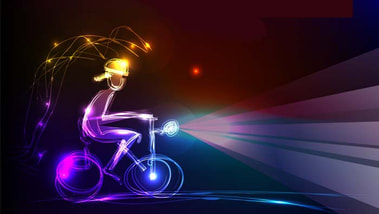 Bike lights have two purposes: to see where you are going and to be seen by others. There is a misconception that if you ride a bike in the city you do not need bright lights because there is ambient lighting from street and car lights which allows you to see and be seen. While any small powered bike light is better than nothing, a bright light will improve your safety by extending your ability to be seen from a greater distant and providing better illumination of the road. 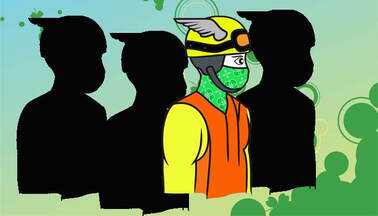 We all know we need to be visible when riding a bike so we can be seen by other road users and pedestrians. But when we think about increasing the likelihood of being seen we usually think about bike lights and reflectors, that is, items mounted on the bike. But there is another way a rider can improve visibility—clothing. What you wear when you ride a bike can make a big difference in increasing your visibility and safety. 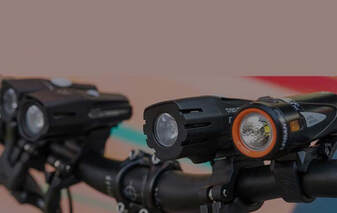 In a 1962 episode of the television series Rawhide, "The Devil and the Deep", trail boss Gil Favor and trail hand Rowdy Yates talk about looking forward to arriving in Abilene where they will sell the cattle they have been driving across the country and collect their wages. Rowdy says Abilene is the biggest little town in Kansas and he has no problem selecting company to spend his money with because, after all, "Only half the population is women, half of that is young, and half of that is pretty." That narrows it down significantly. It is the same process with bicycle lights. 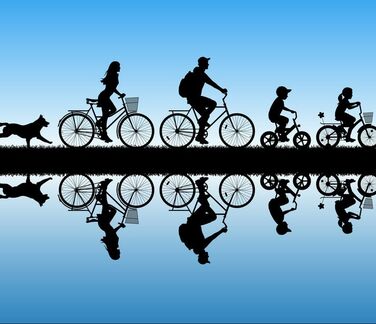 If you want to be visible on the roads it helps to have a lighting system and a smart system includes both active and passive elements. In the last blog we talked about lights both at night and during the day, front, rear, on wheels, and helmets. But having passive or reflective features is a plus that multiplies your safety. If a headlight or other light source is shone upon something reflective it will shine back, they never run out of batteries, and even if a reflector is cracked or broken, it still offers some visibility. Anything that reflects as a result of a rhythmic pattern, an up and down motion of the pedals or rotation of wheels, will catch the eyes of other road users better than something static. Reflective elements are available both on the bike and on the cyclist. 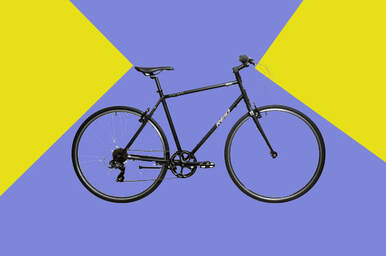 Using your bicycle lights during daytime hours is a brilliant strategy for enhancing your safety while riding a bike. There are lots of distractions on the streets from the various modes of transportation (pedestrian, auto, bike, scooter) and from cell phone usage. It is common sense, and legally required, for cyclists to utilize a front light and rear reflector at night, but there are studies that say the majority of cycling crashes occur during daylight. Daytime running lights on autos have made a positive impact on traffic safety so there was a 12 month Danish study to see if safety benefits extend to biking. In the study the use of daytime lights resulted in a 19% reduction in personal injury rates—that is a 1 in 5 drop in the risk of being injured. Being “always on” is a good idea. 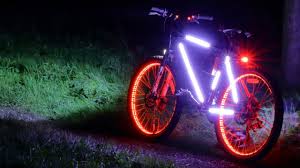 With the days getting shorter there is less time for cycling outside when it is not dark. But the definition of “darkness” includes more than the nighttime hours—-it is when visibility is limited. That means if there is fog, overcast skies, or heavy rain it is considered darkness under the law. So even if your commute is only between sunrise and sunset, you should seriously have a lighting system on your bicycle. |
Earth Rider Blog about CycingAuthorSharon Kaminecki and others comment on adventures in bicycling and other stories Categories
All
Archives
August 2023
|


